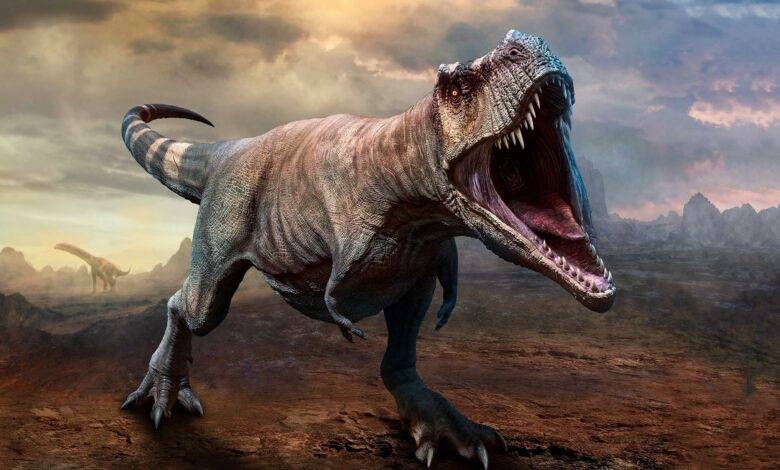A significant victory for science and natural heritage is recorded in Lebanon, opposing a plan to create a private road after a major scientific discovery revealing dinosaur footstep prints in an area on the border between the towns of Ghusta and Batha in the Kesrouan district (Mount Lebanon Governorate). This follows a decision by the Ministry of Culture, which recognized the area as a geological protected site upon a request from the Lebanese Association for Studies of Fossils and Evolution. Professor Danny Azar stated to our site, "This victory is a testament to science and natural heritage against the barbaric urban encroachment and human greed that destroys our country. It is a victory for the towns of Ghusta and Batha and for Lebanon. The Ministry of Culture issued decisions to protect the site located on the border between Ghusta and Batha, which contains priceless dinosaur footprint remains. This was prompted by a request from a financier to construct a road through these invaluable remains after my association prepared a complete file, along with letters of support from international museums and recommendations from colleagues in France and other countries to halt the project, aiming to protect this important archaeological site."
The Ministry promptly dispatched a scientific team, where expert Tania Zafien from the General Directorate of Antiquities under the Ministry of Culture examined the site. The ministry sent several letters, including to Mount Lebanon Governor Judge Mohammad Makawi, lawyer Elias Qahwati, and to the mayors of the towns of Ghusta and Batha for the purpose of protecting the site. Azar noted, "What is striking is the concern of the private landowners containing these important remains, as they contacted us to inform that someone filed a right-of-way lawsuit through this piece of land, which holds the dinosaur footprints about which we previously published a scientific article. These remains are sufficient to prevent any encroachment on the site discovered by Dr. Raymond Jazz in 2010, who uncovered the lower section close to the road, and our scientific team discovered the upper part about two weeks later. After studies and field examinations, we published our research in 2016. Approximately two years ago, Mr. Bashir Al-Mir, a resident of one of the three properties that contain the footprints, informed me that someone who owns a property behind this site filed a lawsuit seeking a right of way through the archaeological site to attempt to halt the works and protect and rescue the site. The local residents and neighboring buildings are exceedingly proud of having these remains nearby and are making efforts to preserve them, which is highly positive."
He continued, "I also reached out to Mr. Fadi Bouaino from the Directorate of Antiquities, who connected me to the regional officer in Kesrouan, Zafien, who immediately took the initiative to visit and inspect the site. After providing property statements and the necessary legal documents, I also contacted the General Director of the Ministry of Environment, Berg Hatjian, who showed significant willingness to engage with the case and communicated with the judicial authorities responsible. Lawyer Elias Qahwati, whom the residents tasked to defend the site, also contacted me and submitted letters to the relevant ministries, namely Culture and Environment."
Azar asserted that "this victory is not just for Lebanon; despite being located on Lebanese land, it belongs to the entire world. Everything that indicates the history of the Earth is a public right for all inhabitants of the planet, and since it is on our soil, it is our duty to protect it." Regarding these remains, Azar clarified that they belong to three families of dinosaurs: Sauropods, which were herbivorous and walked on four legs, Theropods, which were carnivorous and walked on two legs, and Ornithopods, also carnivorous and bipedal, all of which existed in the area dating back to 125 million years from the Jurassic period. The dinosaur trackway in Batha-Ghusta contains invaluable scientific data about the ancient environment, which was once a shore at the edge of a coastal lake overlooking the Tethys Ocean (the precursor to the Mediterranean Sea). This trackway is unique due to its age and the environmental and ancient biological diversity regarding the types of dinosaurs that were present, constituting a global and human paleontological scientific heritage deserving of protection.
Azar pointed out that "classifying this period and geological layers into the Jurassic era forms part of the doctoral research of Dr. Sibyl Maqsoud, my wife, which has gained international recognition, and is a classification unique to Lebanon." He added, "The environment that housed these dinosaurs was a lagoon on the Tethys Ocean, which is considered a remnant of the Mediterranean Sea. Lebanon was situated on the equator and south of its current position, lying on the edge of the supercontinent Gondwana and serving as a passageway for dinosaurs."
When asked about the existence of dinosaur bones, Azar answered, "This geological layer, which was underwater, does not allow for the existence of bones that would decompose in water since it was submerged. However, we found bones and teeth of dinosaurs in other regions of Lebanon, including the Bskinta area and Mirouba. Unfortunately, in Mirouba, the site has disappeared due to human greed because of the presence of quarries there. We have also discovered dinosaur teeth in the Jwar Al-Sous area in Bakken in Jezzine, belonging to one of the largest dinosaurs that lived on Earth, reaching a length of 12 meters and a weight of about 100 tons."
He added, "We have new and important discoveries, but I will not mention the site or the scientific discovery since it is still under study, and it is an important site for dinosaurs, even though it is located in a newer spot than the footprint remains, estimated to be 100 million years old. My aim is to protect this site before it falls into the hands of vandalism, which is always a concern, as many view these discoveries solely from the perspective of financial gain. This outlook harms the environment, the homeland, and the world because neglecting to study these sites and their environments deprives them of scientific value. They represent a treasure for scientific and global heritage at both national and global levels, and yesterday's achievement in protecting this site from destruction by creating a road through it is a significant step."
He hopes that researchers from Lebanon and the world will be able to "protect these sites that are part of the global scientific history and evolution. Our country is rich in these treasures, and we must take responsibility for preserving them, especially the concerned parties responsible from ministries, lawyers, specialists, and the teams from the Ministry of Environment and Culture, along with the lawyers and residents of the two towns and members of their municipal councils."




